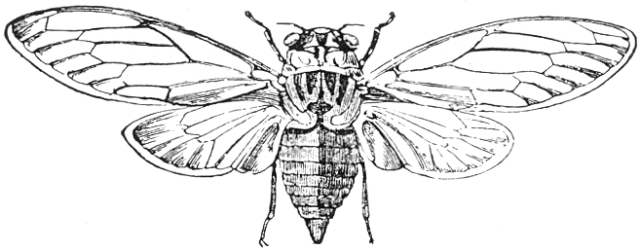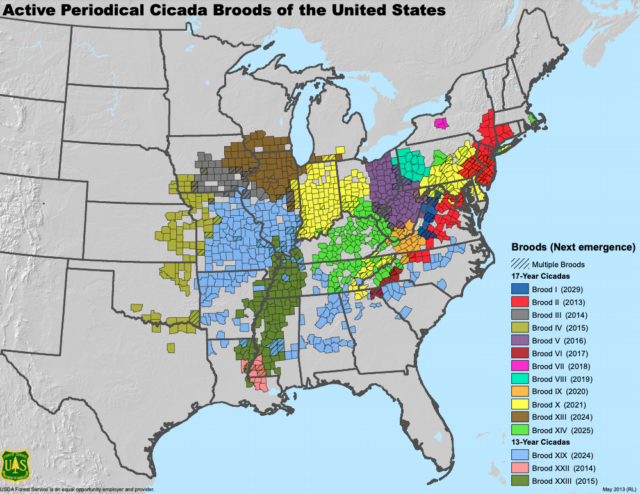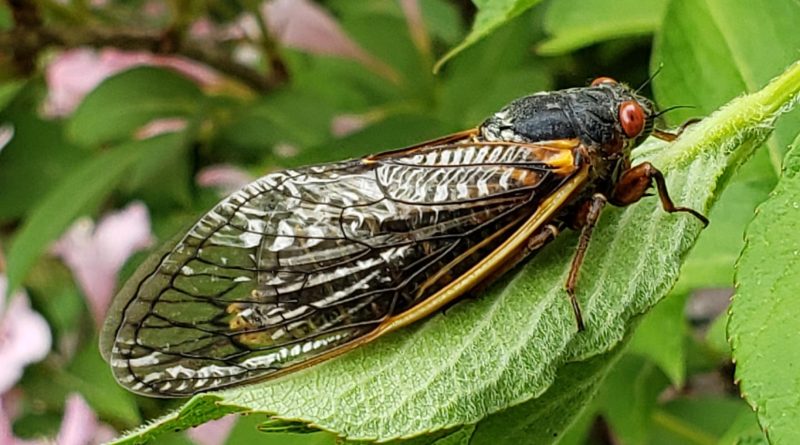The Cicadas are Coming! But where can you find them?
As the summer heats up, you might hear for the tell-tale sound of the cicadas. This year the cicada chorus will be especially impressive as “Brood X” is anticipated to emerge. Brood X (pronounced 10) is the largest of a dozen different cicada broods occurring in parts of 15 states, including Pennsylvania. All the broods are on different 17 or 13 year schedules.
The cicadas are expected to start emerging in late May in our region. Periodical cicadas emerge in large numbers when the soil temperature reached 64º F and often after a soaking rain. The Philadelphia peak emergence is typically in June.
Known to the Native Americans for centuries prior to European contact, periodical cicadas were first recorded at Plymouth Colony in 1634. Brood X was first reported in 1715 in Philadelphia and will be making their return again to the city this year.

The 17-year cycle is a survival technique. By emerging at the same time in massive numbers, the cicadas are able to provide a tasty treat for every hungry predator, and still leave enough survivors to reproduce.
Once they’re above ground, the cicadas have one goal: mating. Cue their distinctive buzzing sound. Male cicadas sing to attract females by flexing drum-like organs called tymbals found in their abdomens. The sound is intensified by the cicada’s mostly hollow abdomen.
Female cicadas lay eggs in trees before completing their life cycle. After hatching, the nymphs (baby) cicadas will drop to the ground and burrow under. There they will spend 13 or 17 years underground feeding on the sap from tree roots.
Although they may appear fearsome, adult cicadas do not sting or bite, and they do not carry diseases. But they can harm young trees when they lay their eggs in new growth. Pesticides are not effective at controlling periodical cicadas. If you have a young tree, you can loosely wrap the branches with cheesecloth to keep the female from laying her eggs on it.
The anticipated Brood X cicadas emergence will greatly benefit the local ecology by aerating soil as they tunnel out of underground, providing a feast to predators including birds. Their decaying bodies contribute a massive amount of nitrogen and other nutrients to the soil and the egg-laying in trees provides natural pruning producing more flowers and fruit in the following year.

So where can you find them?
Will you be able to find cicadas in Philadelphia this year? Good question. Cicadas emerge from undisturbed soil. Since much of Philadelphia has been built-on, filled, paved, or otherwise altered, much of the city is now cicada-free. Forested parkland like Fairmount Park may host some cicadas. But even much of that land has been altered over the years.
In a recent blog post, Jon Gelhaus, PhD, Curator of Entomology at the Academy of Natural Sciences of Drexel University, explored where cicadas might be found in our region.
Gelhaus notes that “…periodical cicadas did occur in Philadelphia at least up until 1902. They were noted at Bartram’s farm, now Bartram’s Garden, and in the Powelton area, both in west Philadelphia…Are they still there? Are they in other areas of Philadelphia as well? This is the year to find out!”
To find them this year, Gelhaus recommends searching for cicadas at “sites in West Philadelphia along the Schuylkill, such as Bartram’s Garden, The Woodlands, or even in Powelton Village. We need to check the city’s extensive Fairmount Park system, and maybe even Laurel Hill Cemetery.”
South Philly’s largest green space, FDR Park, is mostly filled-in marsh (swamp) land, so it’s unlikely you’ll find cicadas there…but it’s worth checking!
If you’re interested in helping scientist map the 2021 emergence of the periodical cicada Brood X, you can download the Cicada Safari free app from the Apple app store or Google play, then go on a safari to find periodical cicadas. Photograph and submit your sightings to Cicada Safari, and after the photos are verified, they will be posted to the live map.




